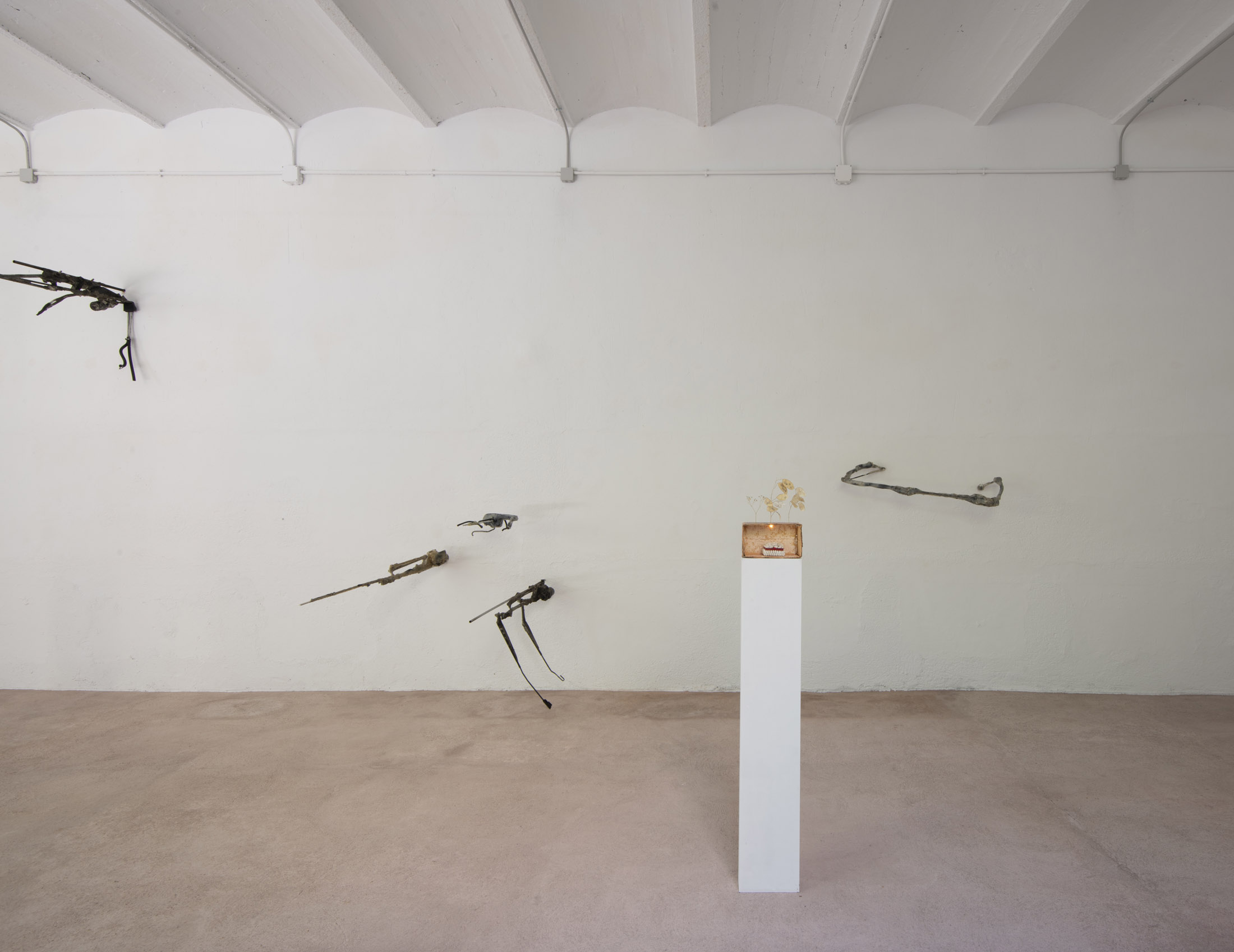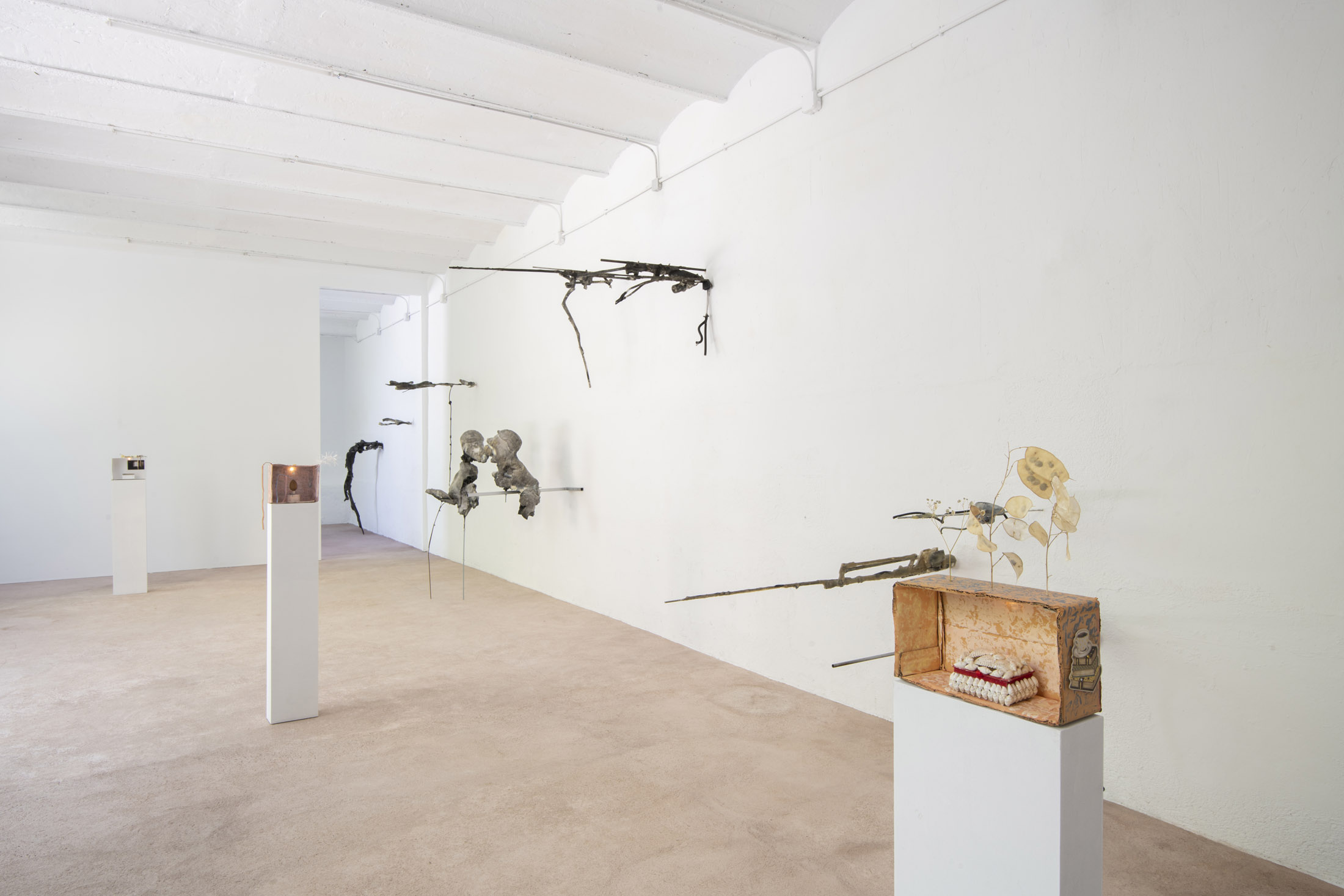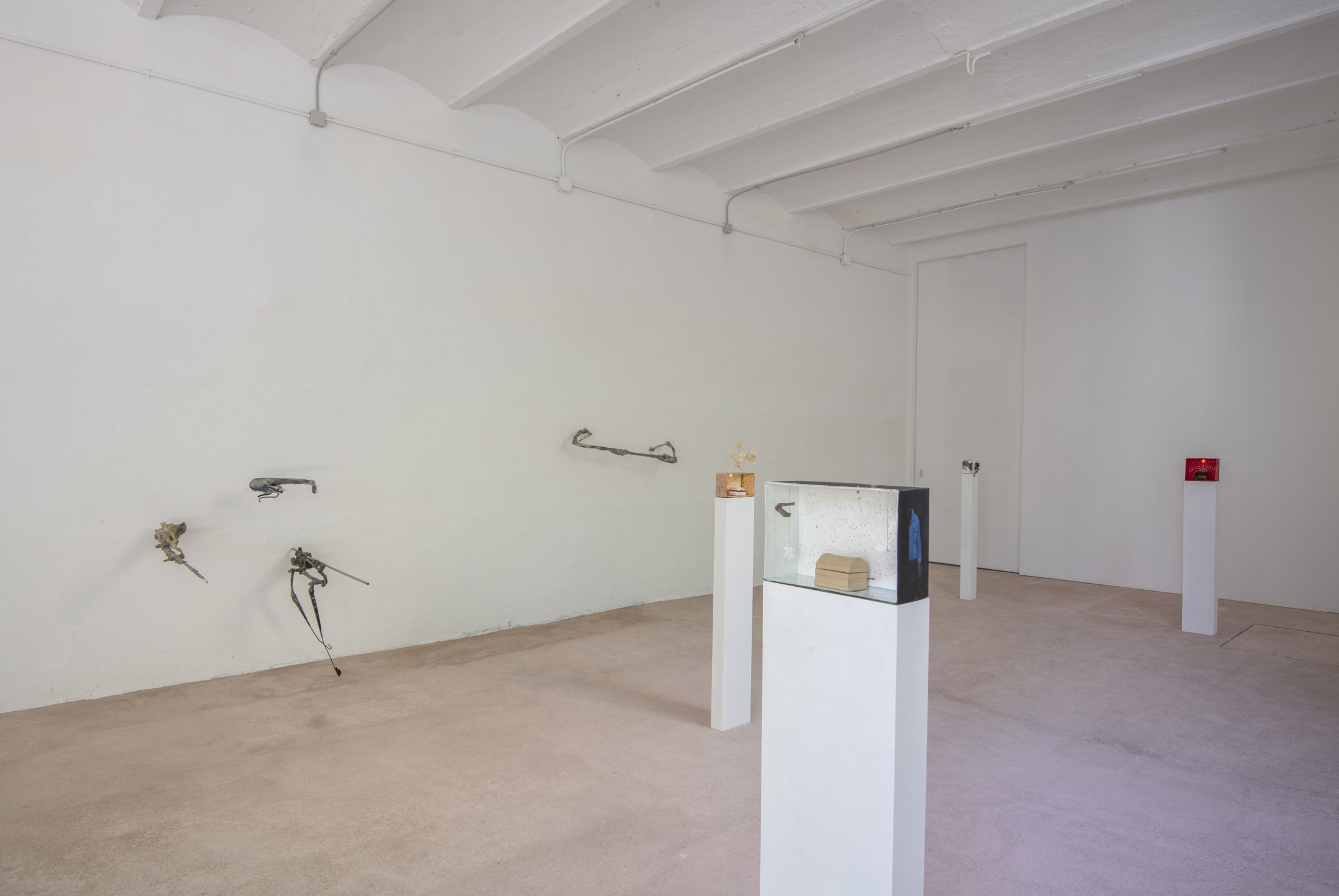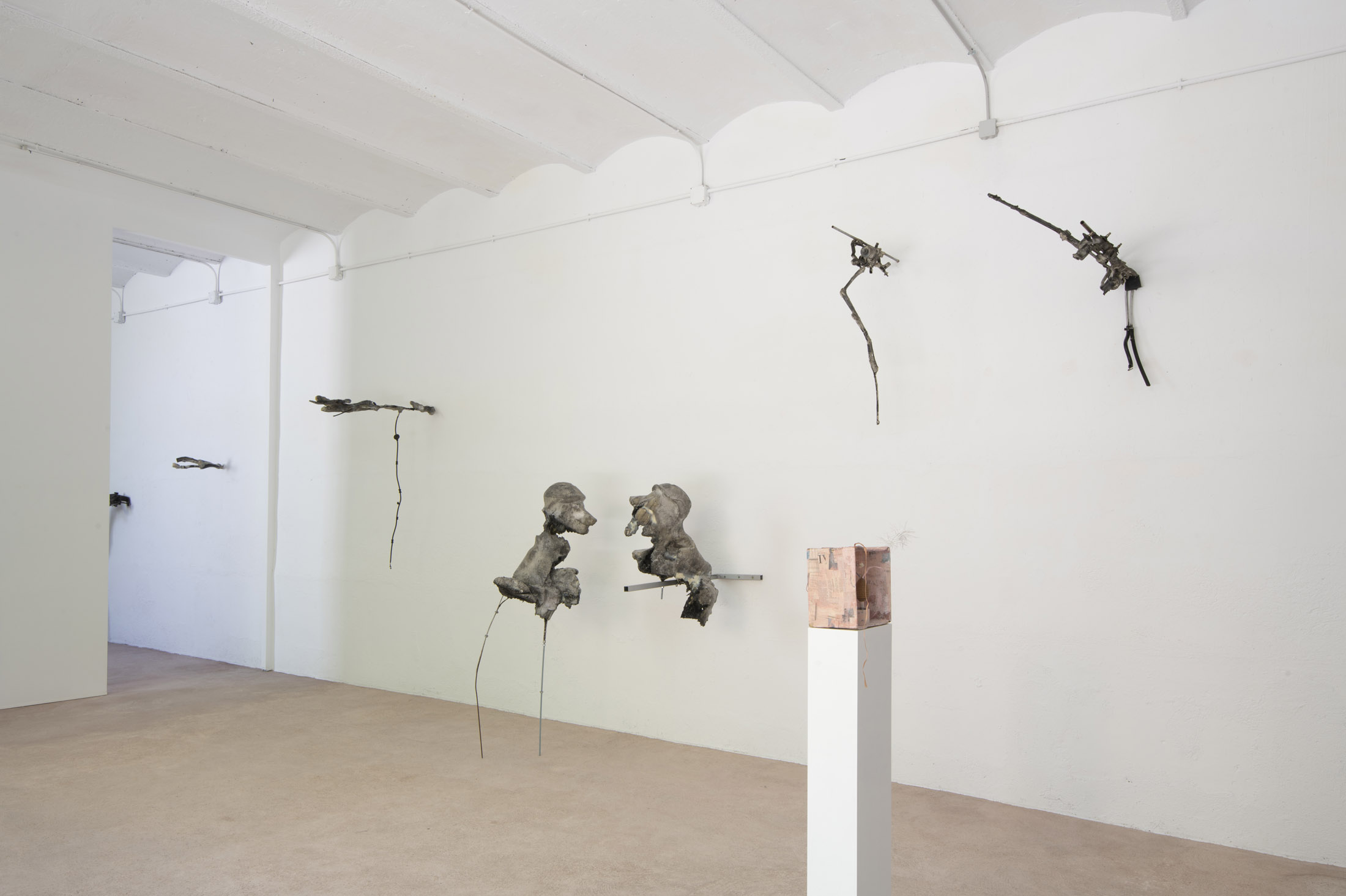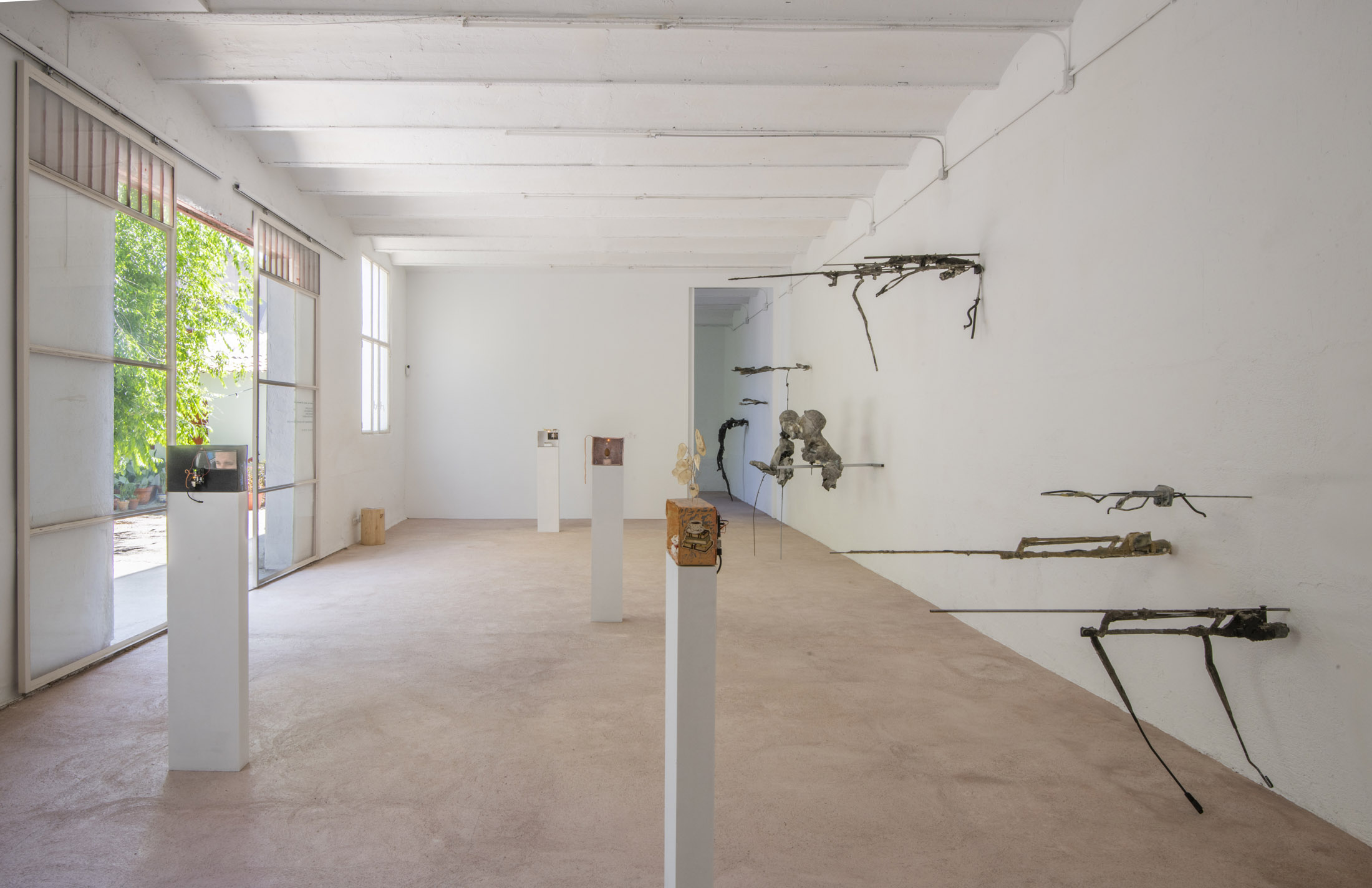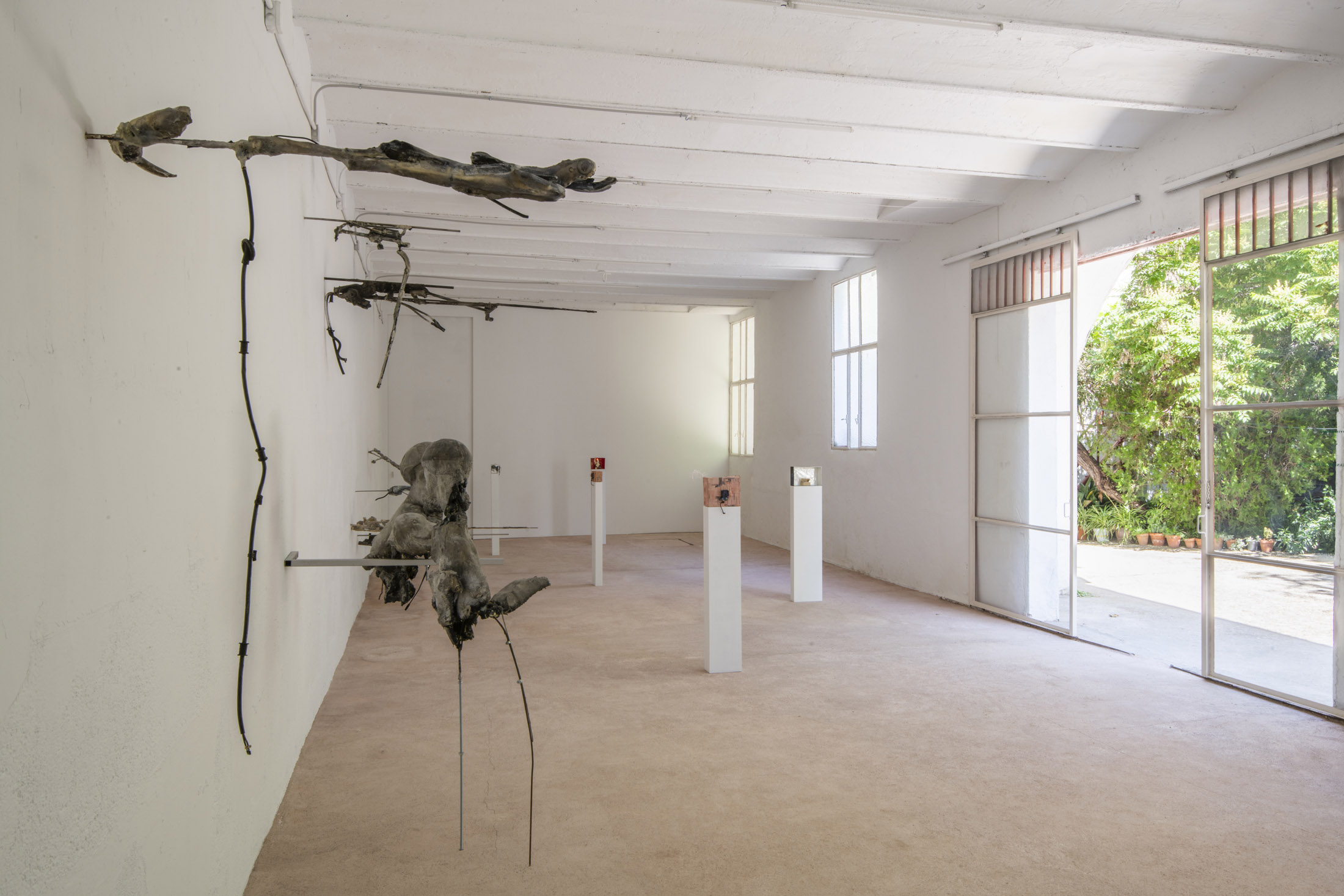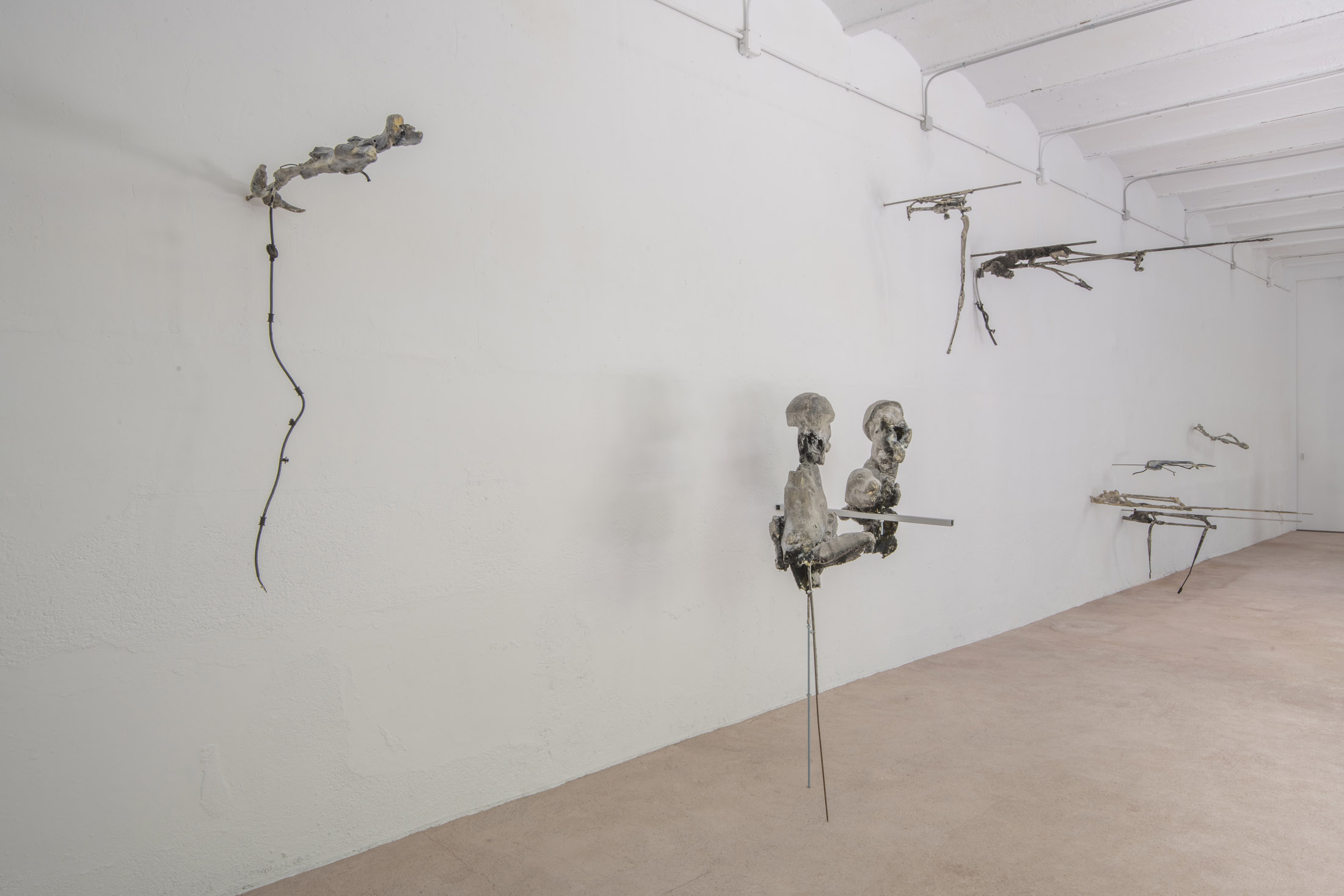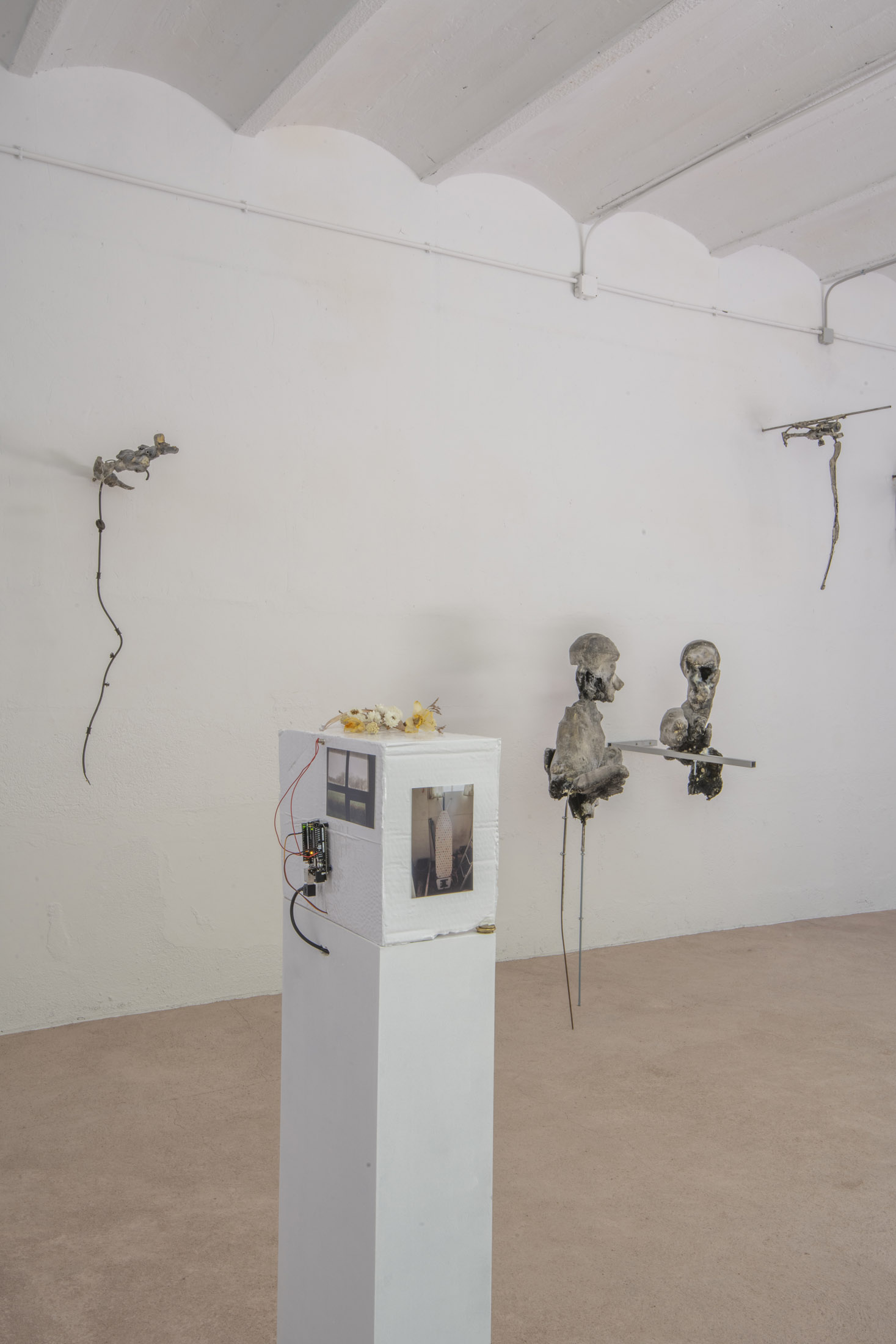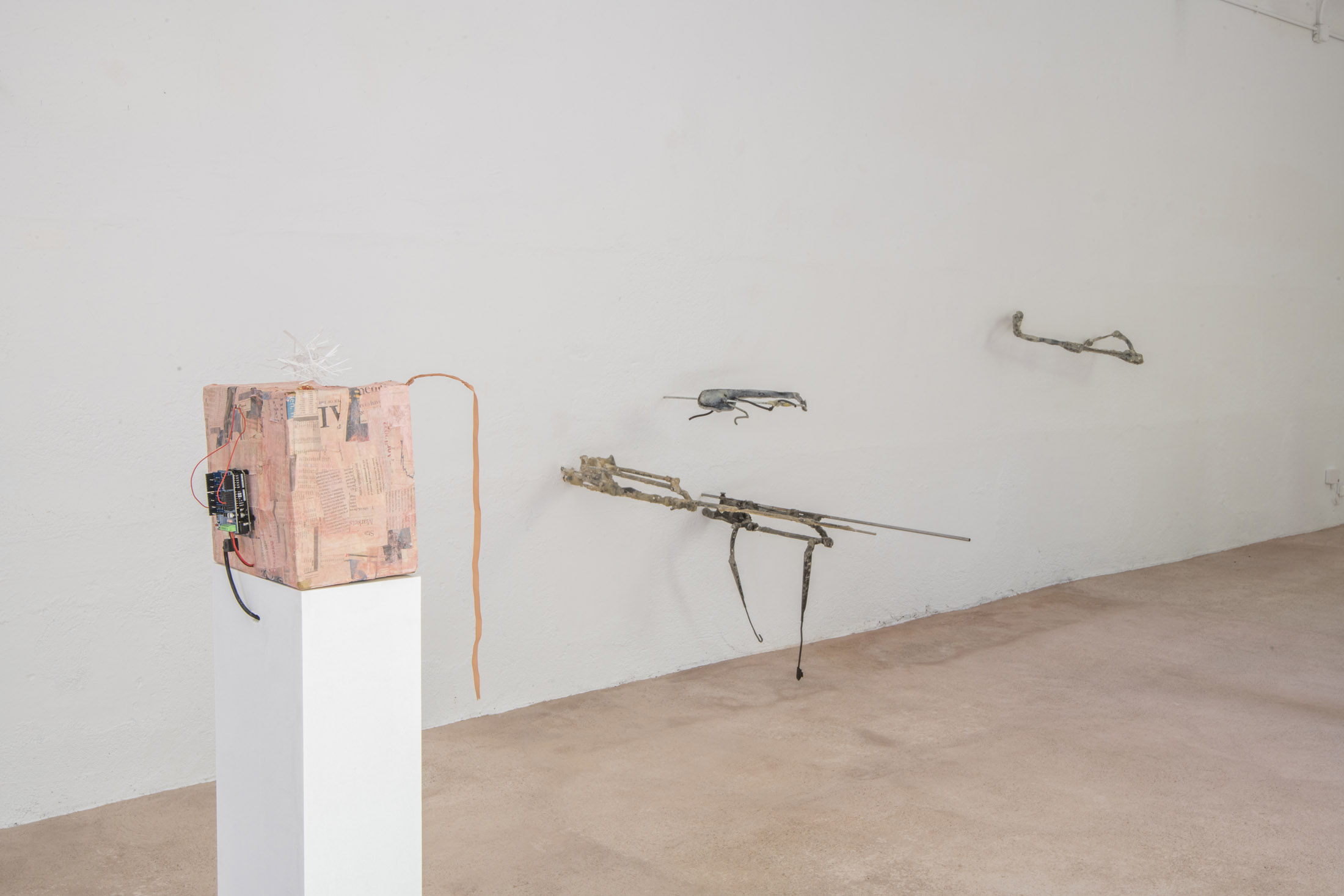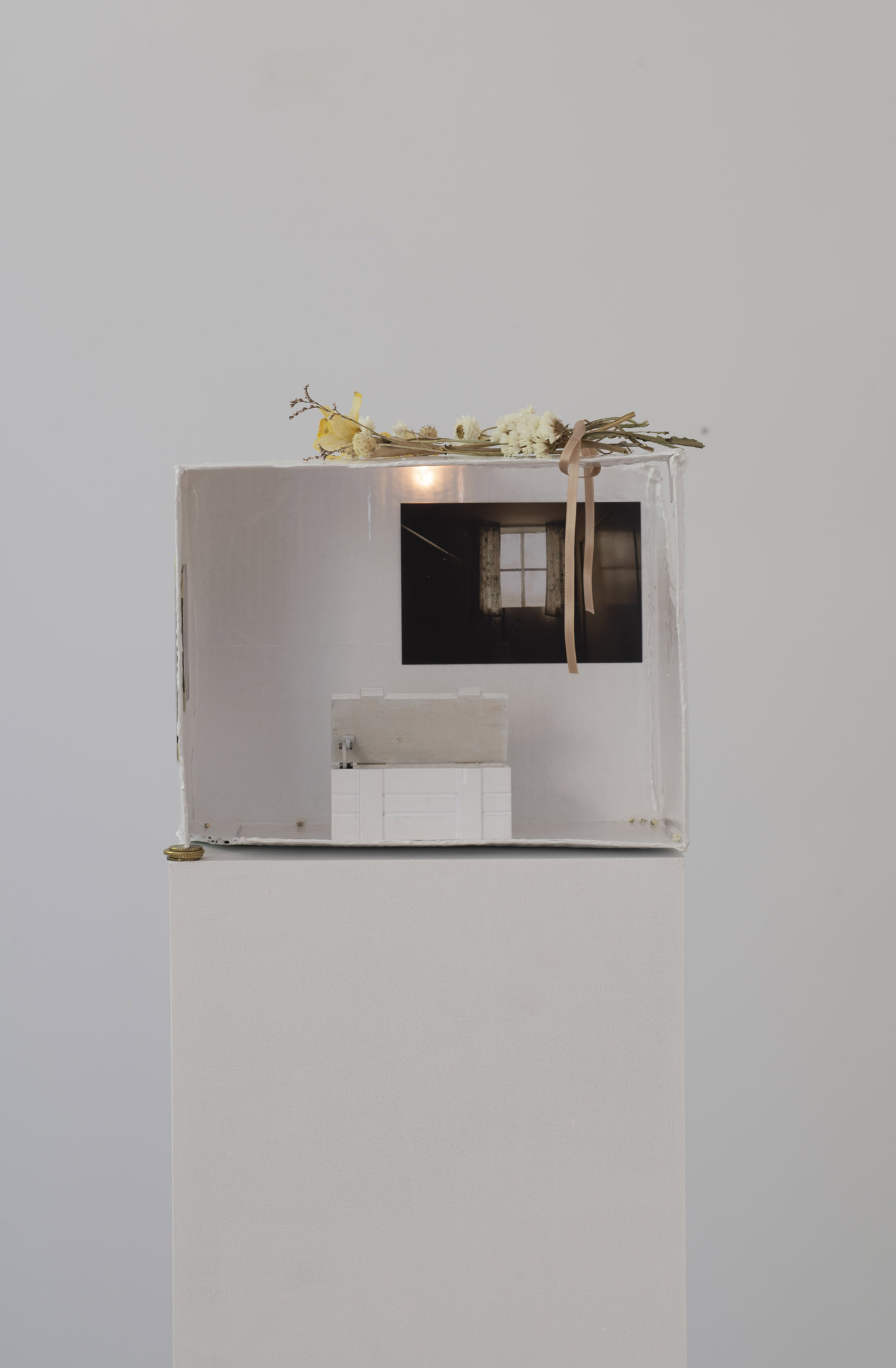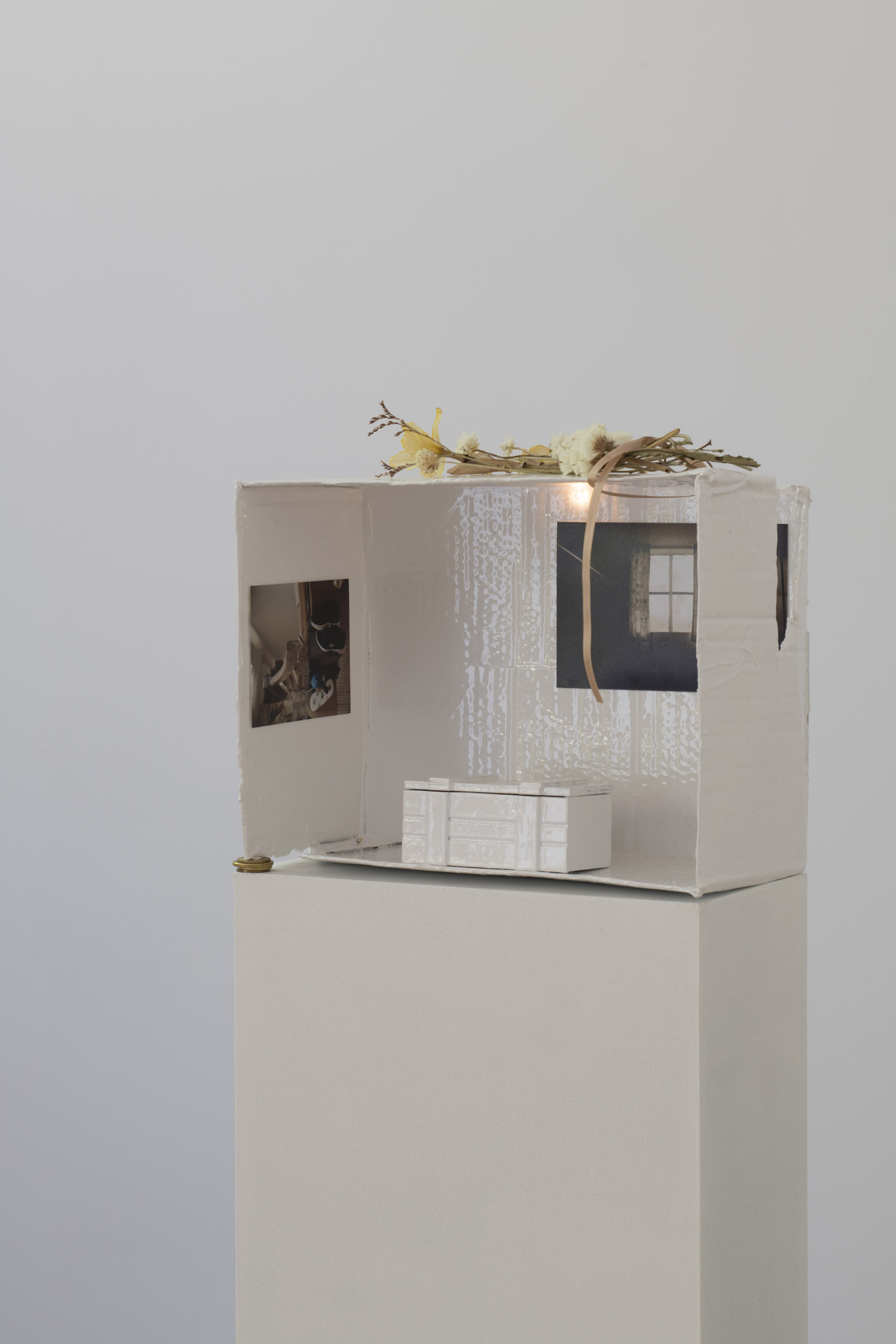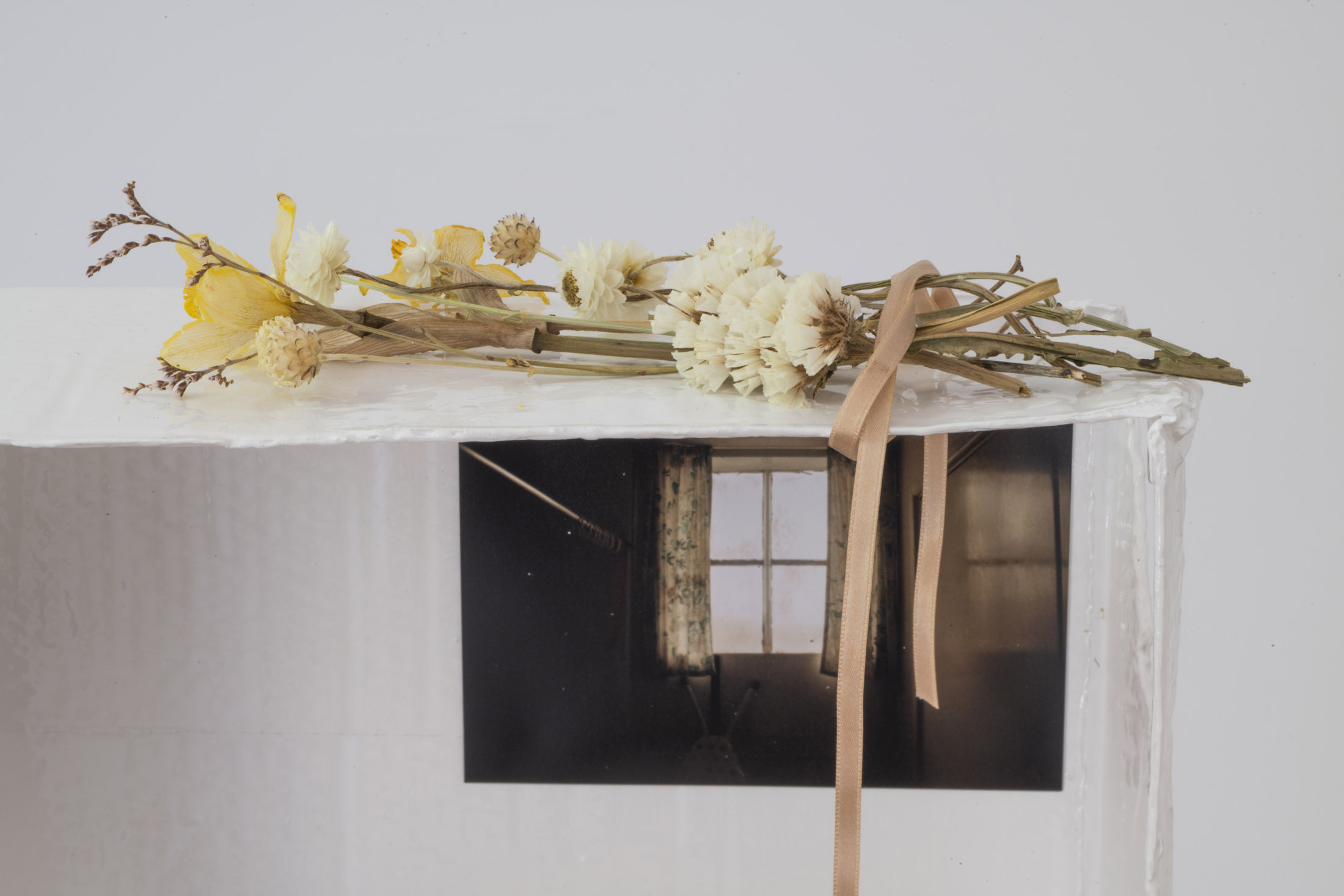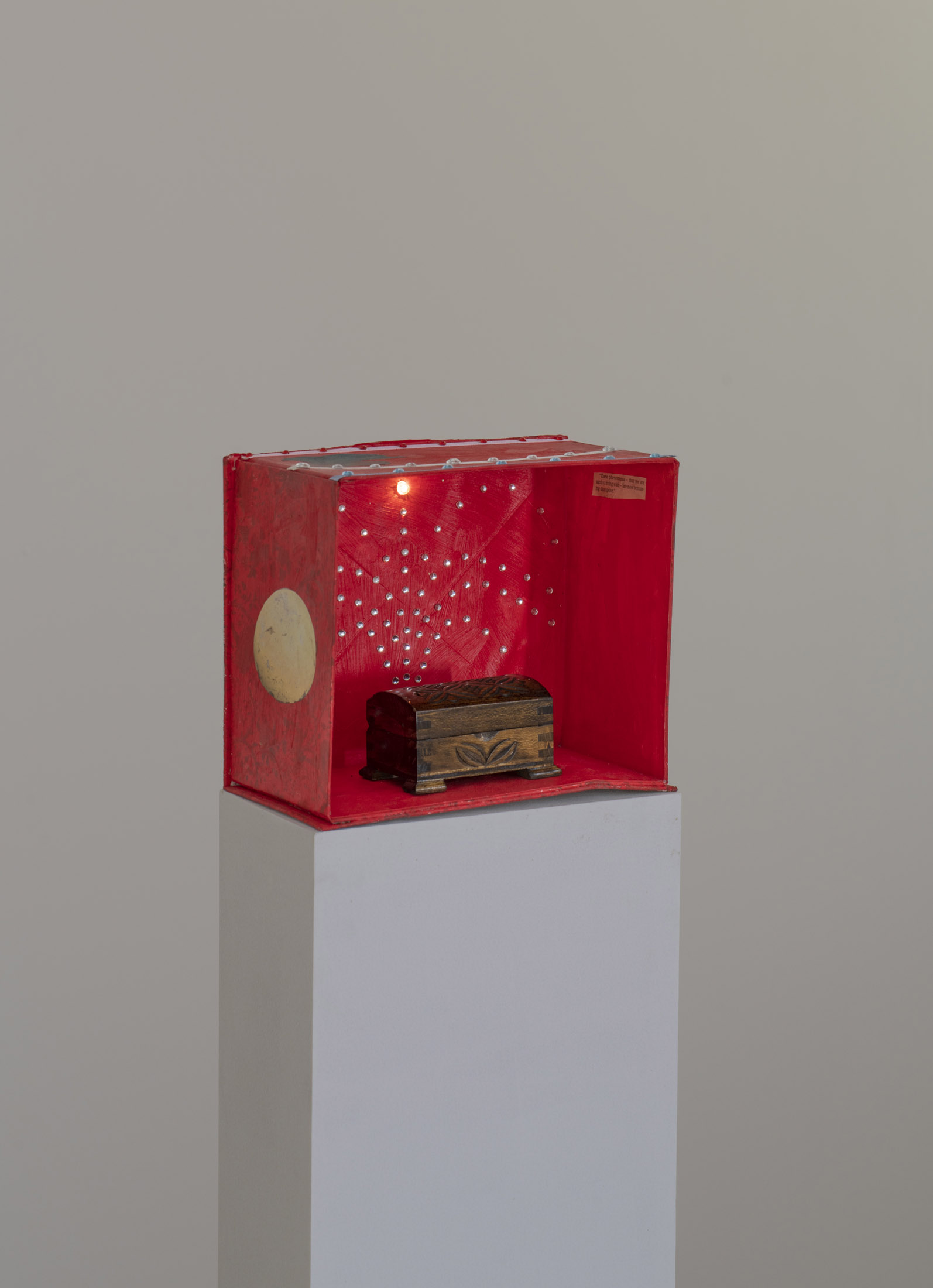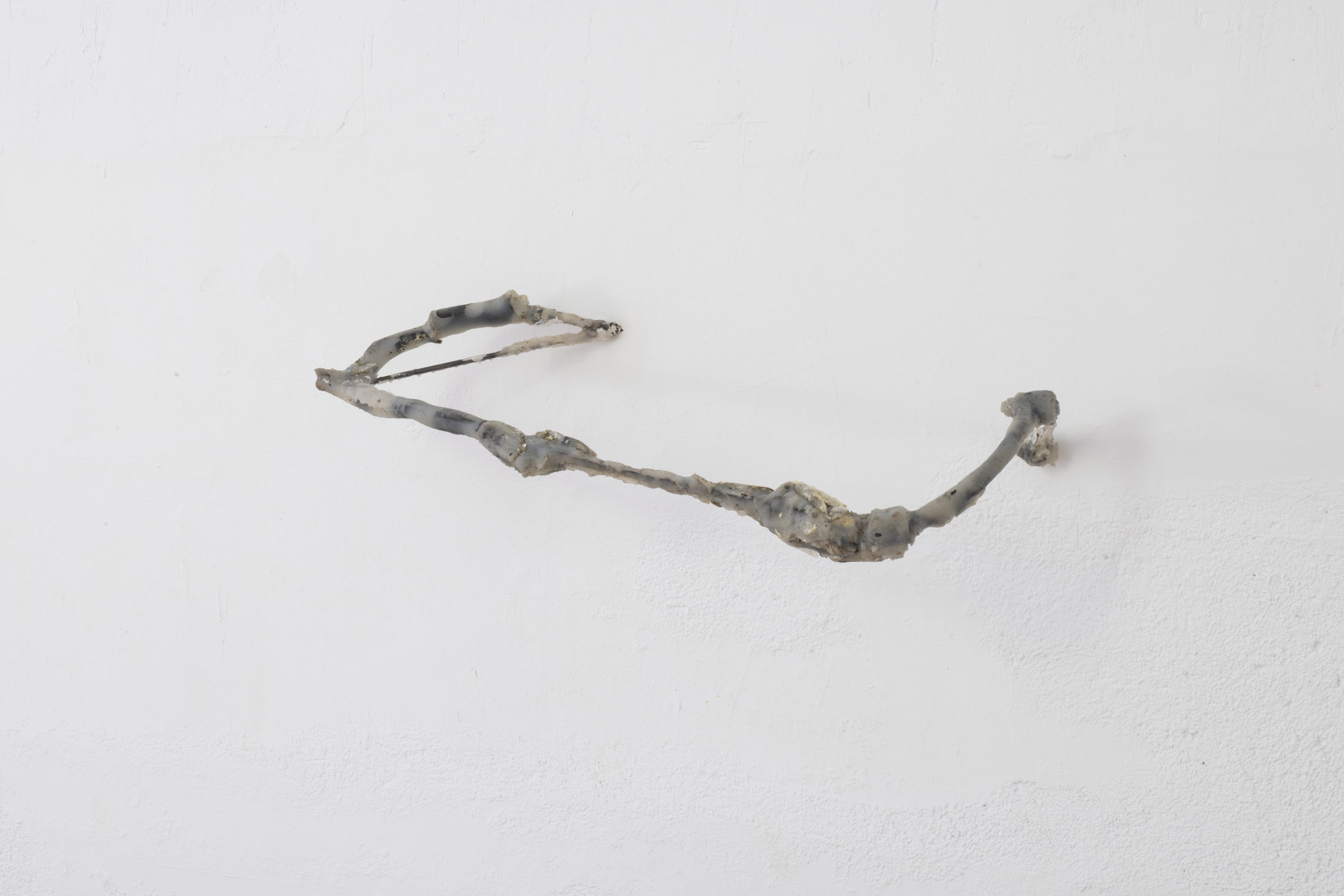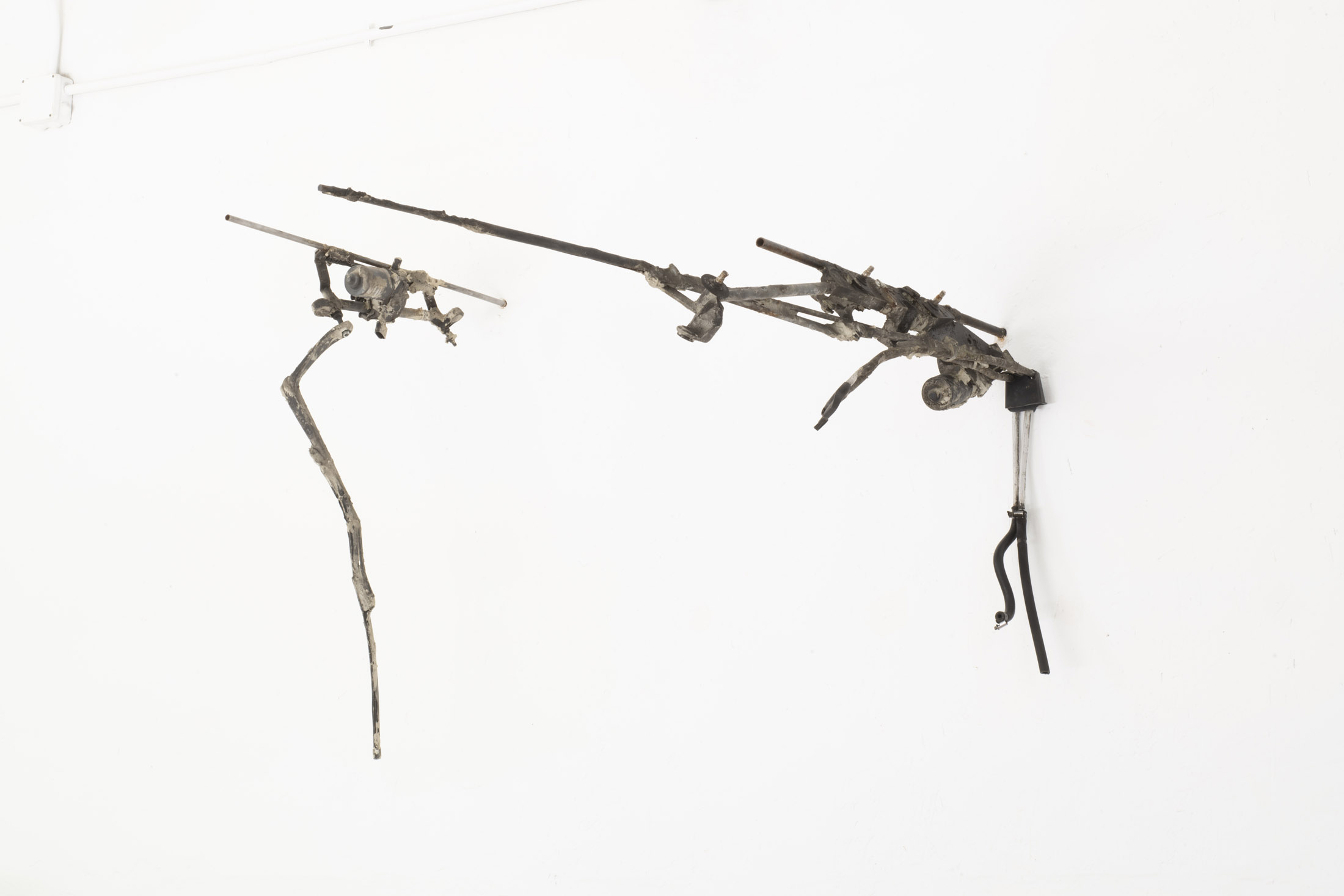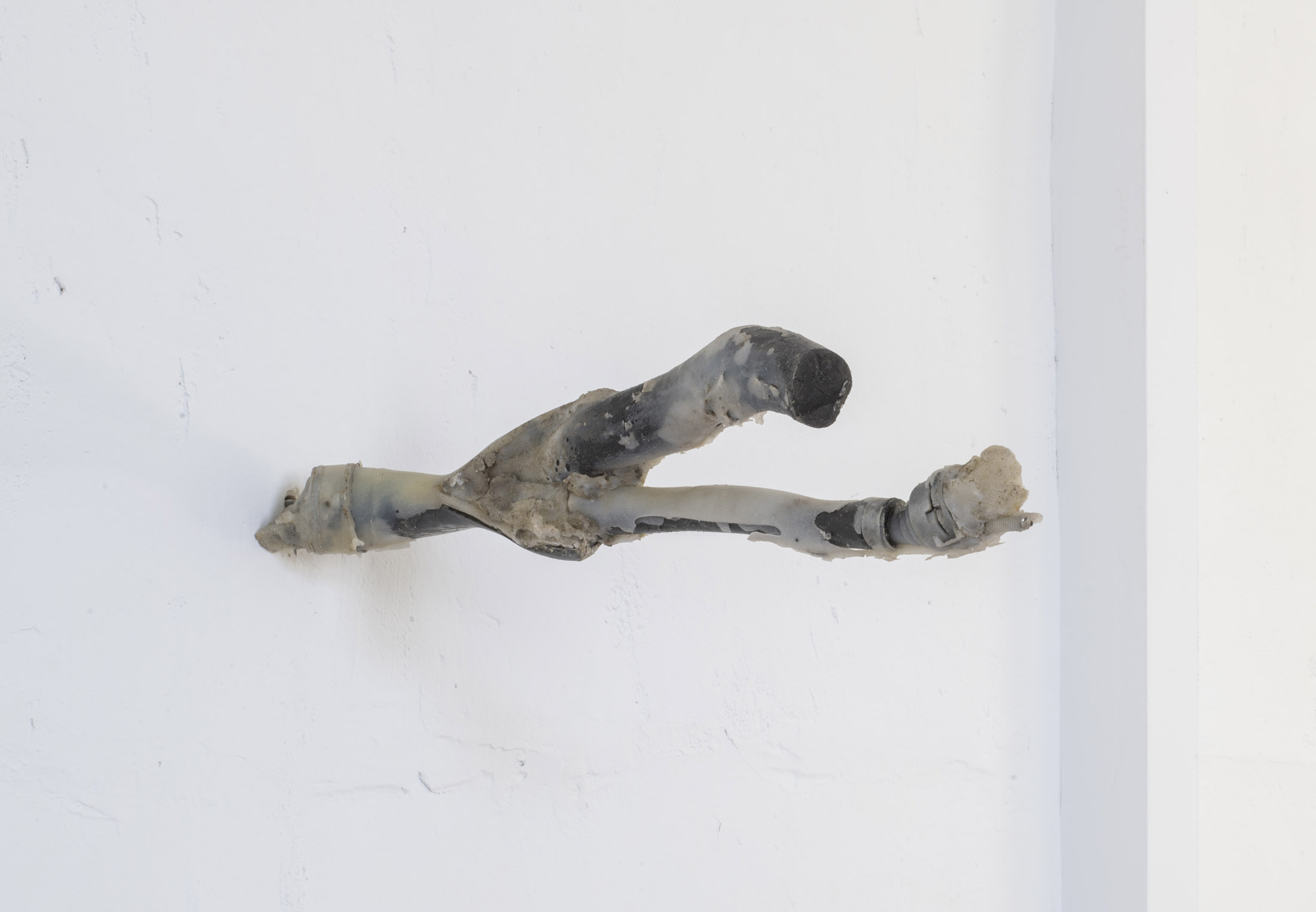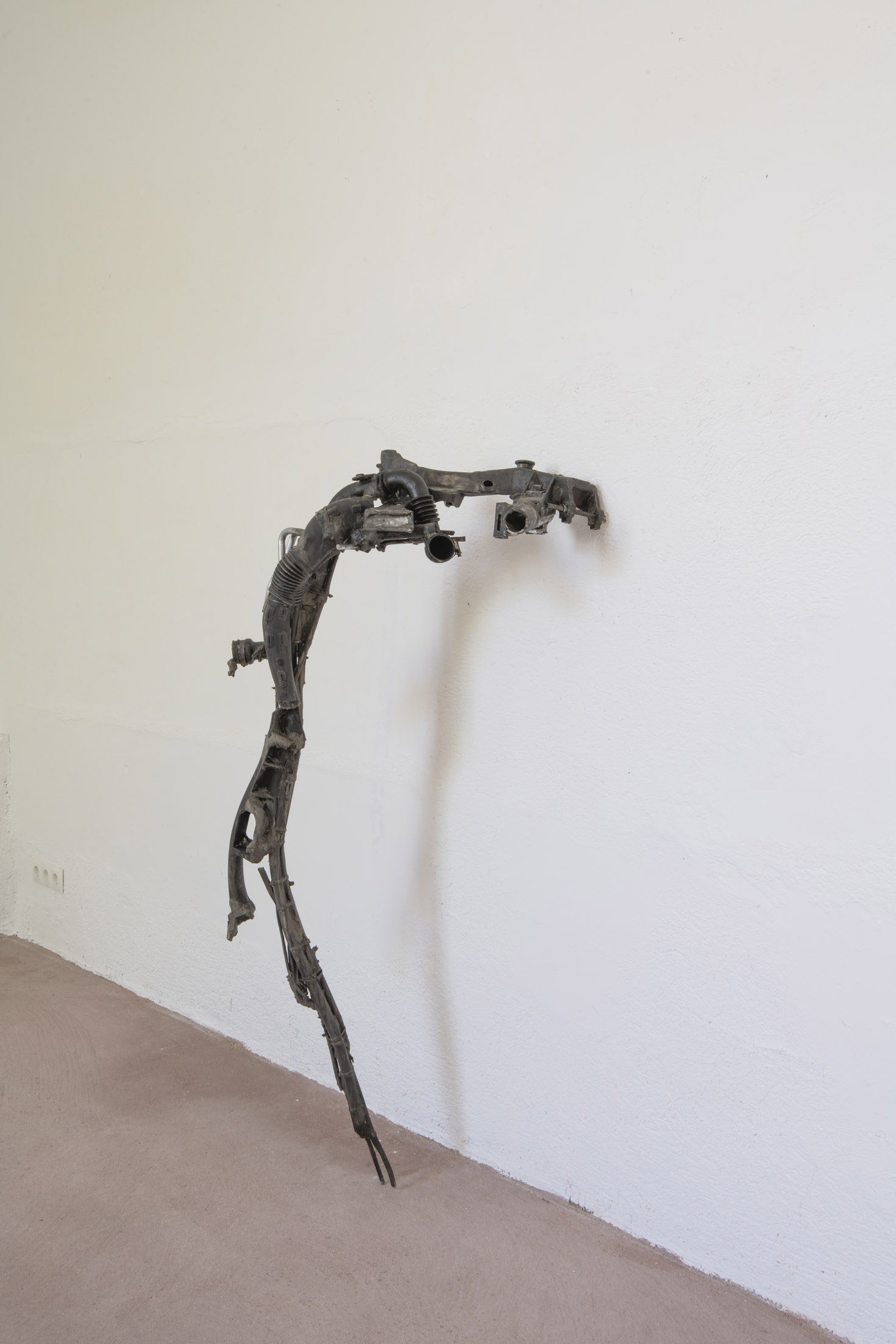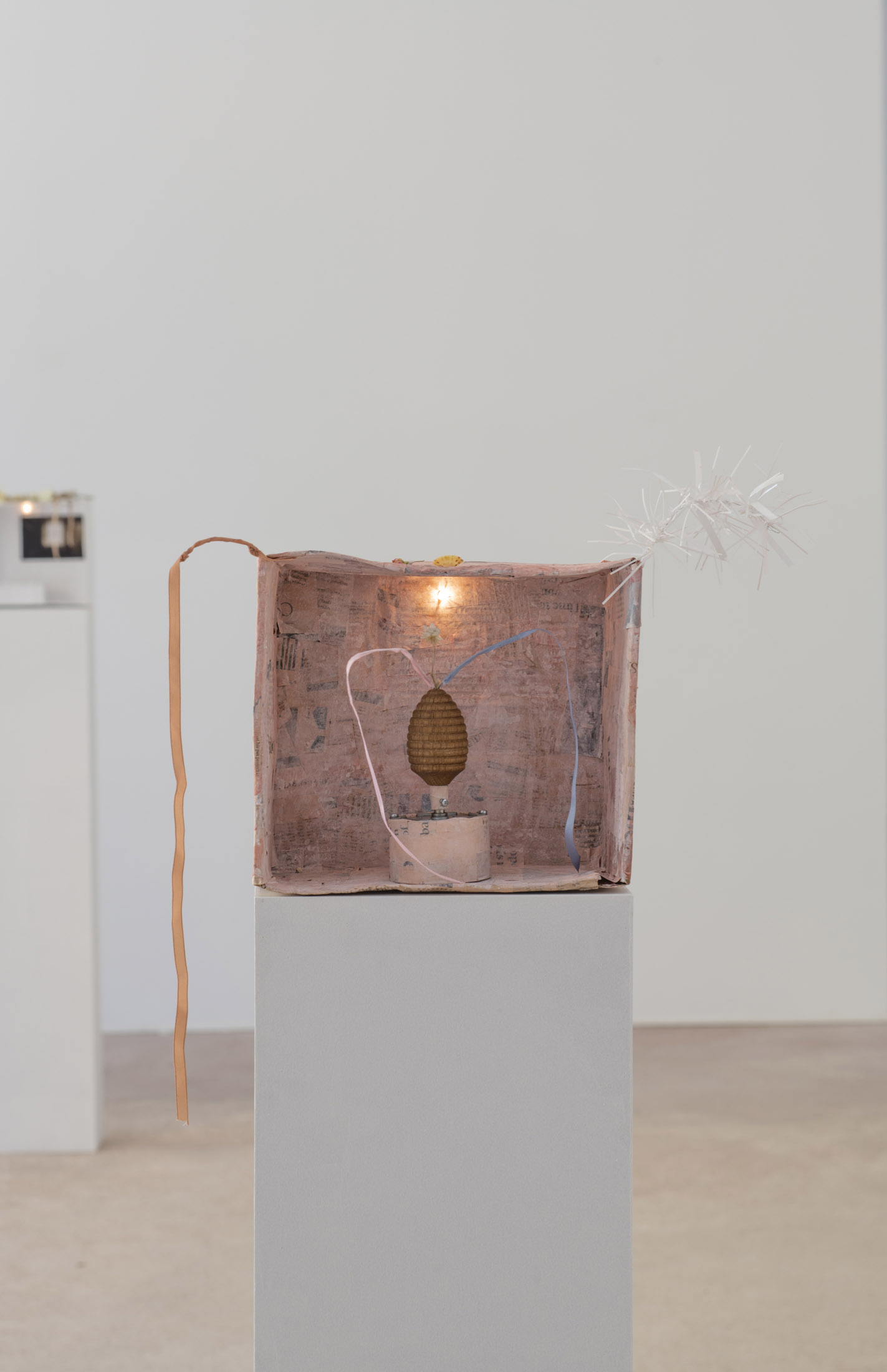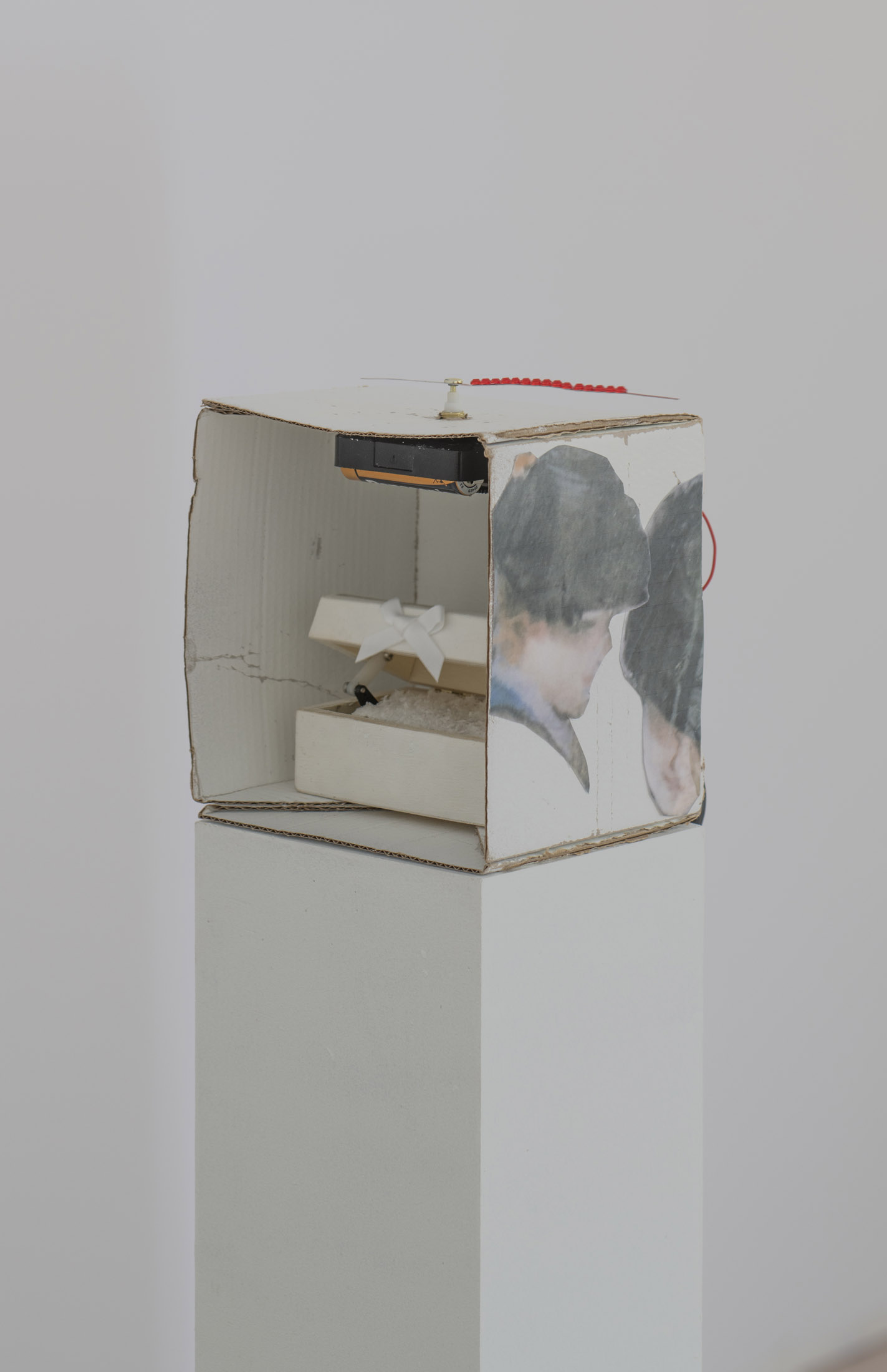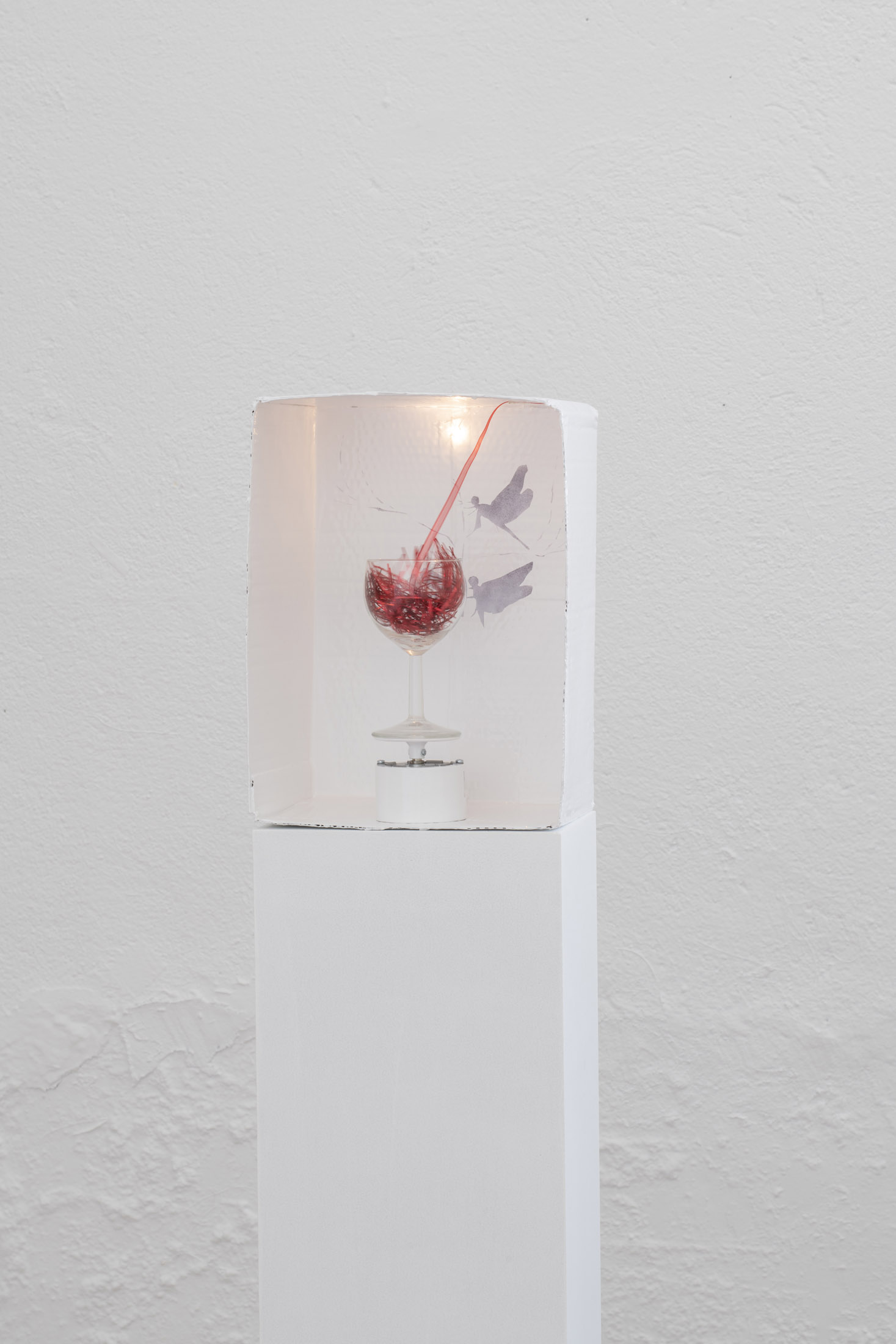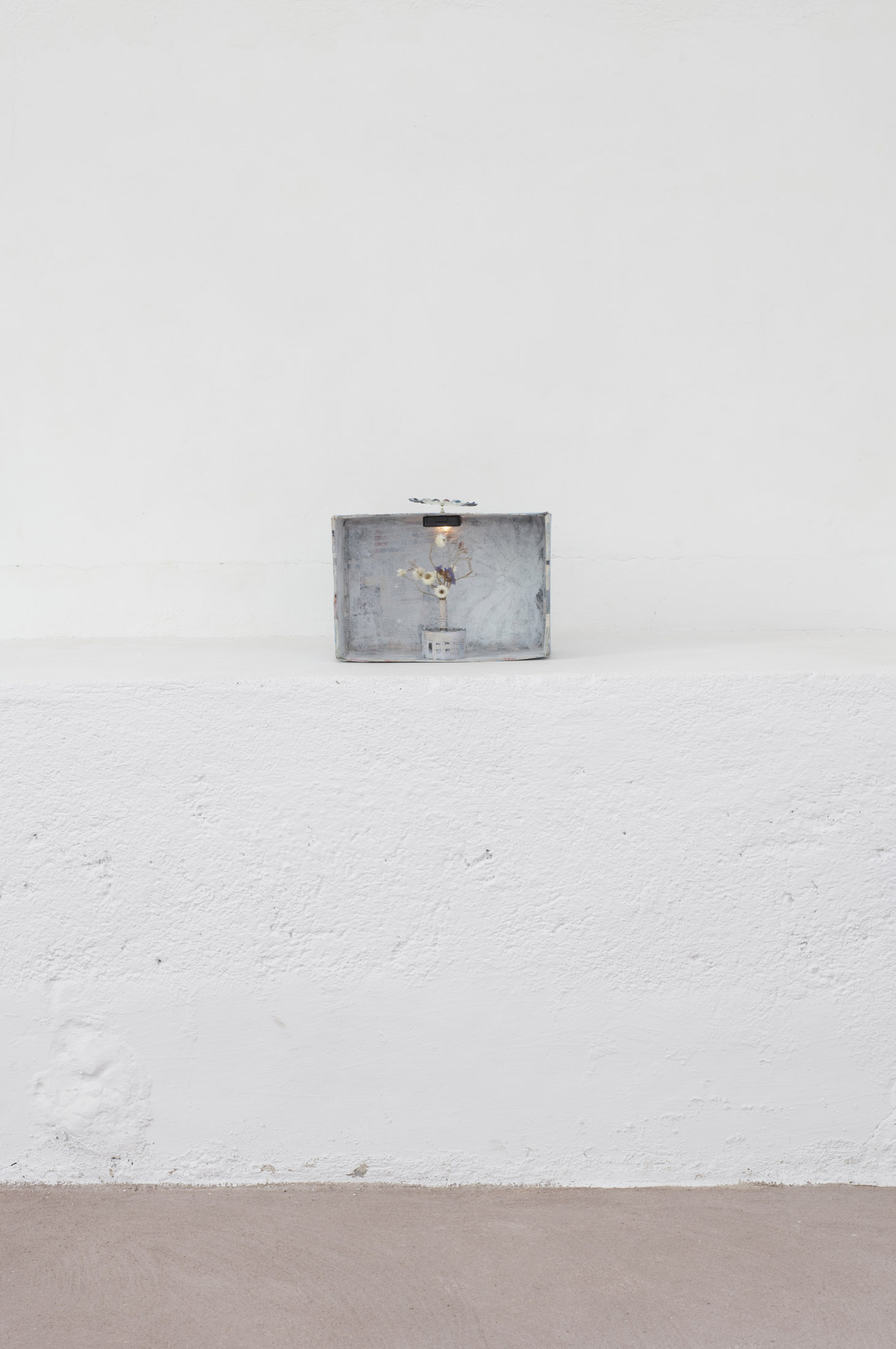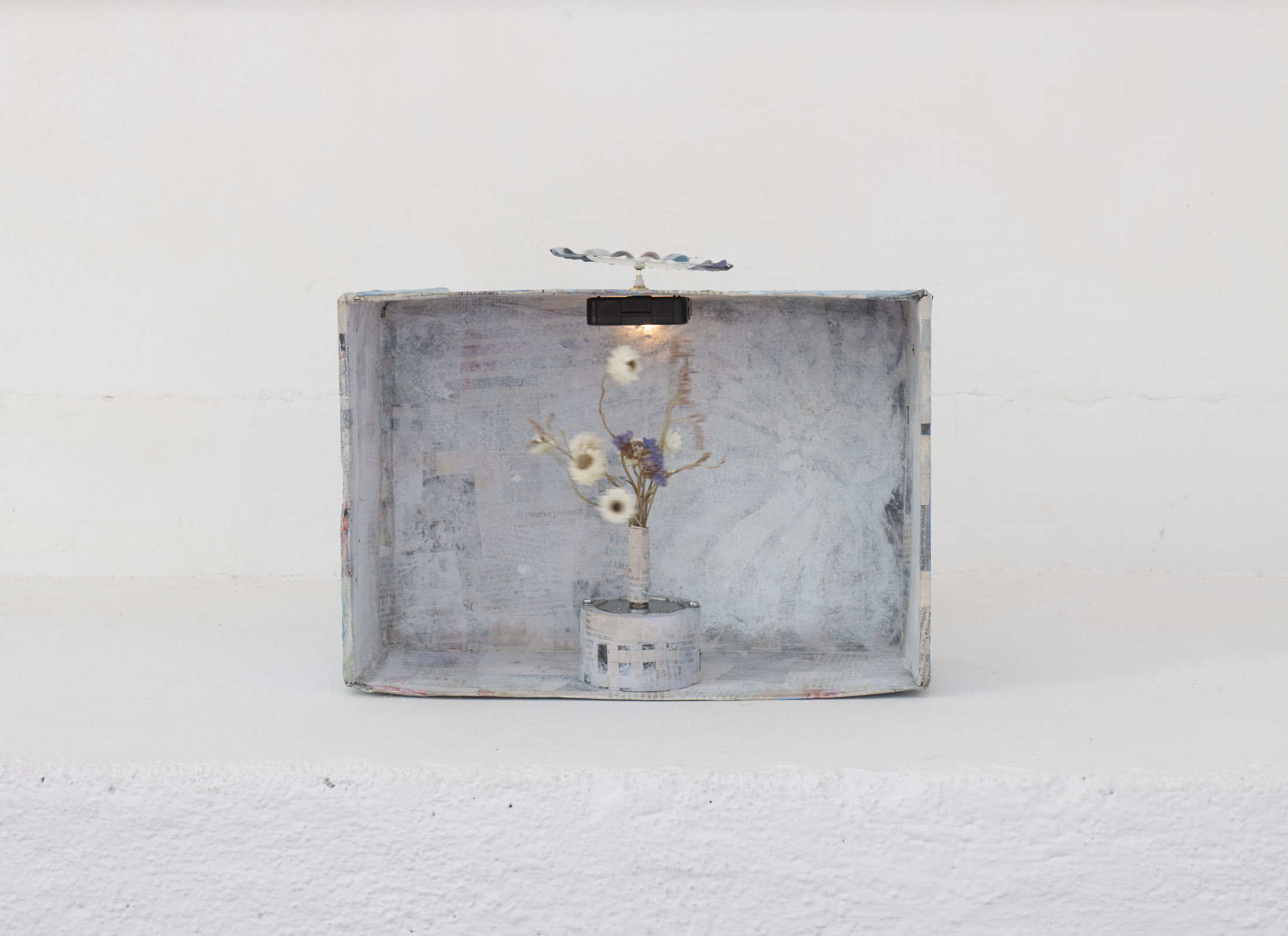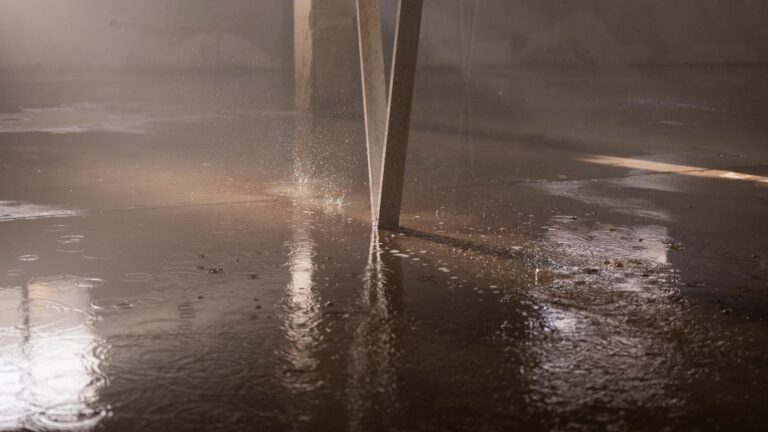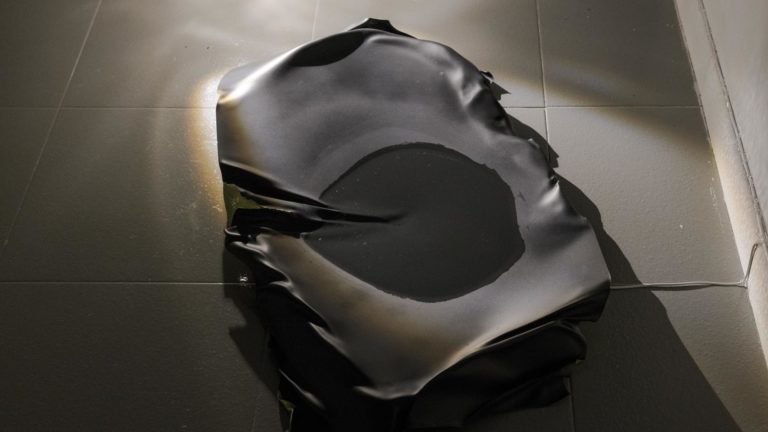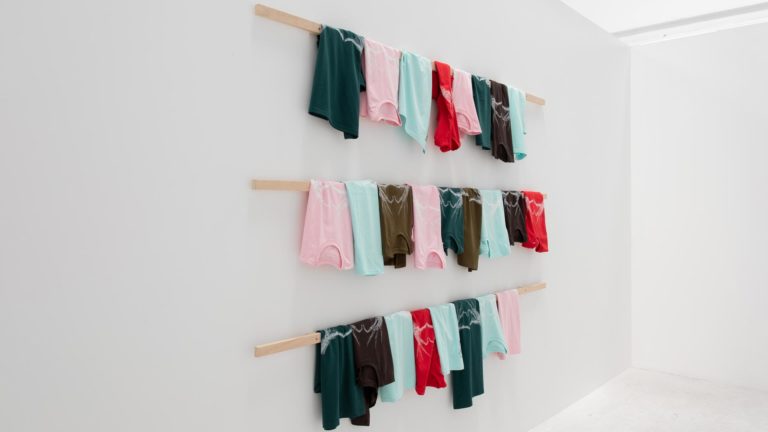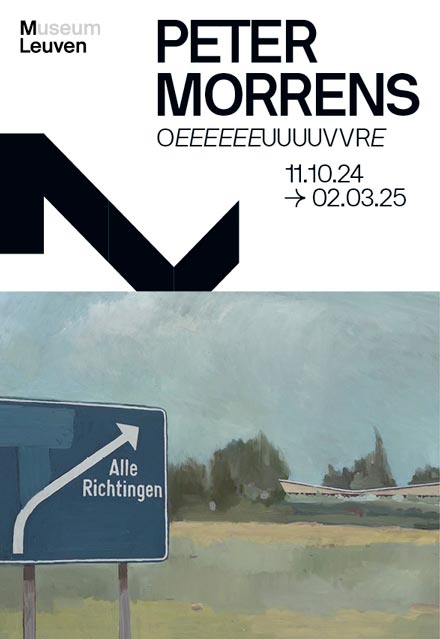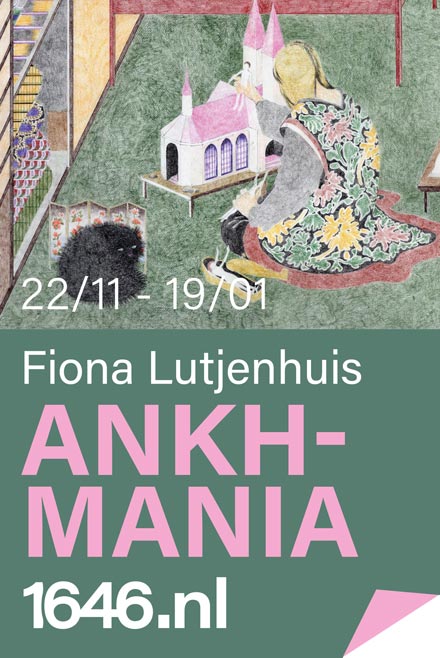Artists: Giulia Cenci, Georgina Hill, Bhanu Kapil, Jonás De Murías
Exhibition title: Esta Luz, Tóxica (II Movimiento)
Curated by: Alejandro Alonso Díaz
Venue: Belmonte, Madrid, Spain
Date: April 22 – June 3, 2023
Photography: all images copyright and courtesy of the artists and Belmonte, Madrid
The host–guest chemistry
Is inclusive, complex, molecular, Dainty.
Google it.
Does the host envelop
The guest or does the guest Attract diminished forms
Of love, like the love
A parent has for a child
In September
And January, when the child
Is at its most
Vulnerable?
Are these questions enough
To violate
Your desire for art
That comes from a foreign Place?
What are the limits
Of this welcome?
After all, I don’t feel anything For you.
-Bhanu Kapil
If it were still possible to isolate the material and immaterial spaces of life, we could continue to think about the toxic in terms of externality: An outside that damages the bodies beyond the function of the sensorium.
The senses are the place where the contact of the body with the ground is exercised, with other, with heat and fear. A contact space that is essential for the maintenance and care of life. In the process, these sensory contours are moulded, bent, infiltrated; seeping into the threshold of a noxious intellection, contaminated thoughts and poisoned senses, toxic ecosystems and corrupted social environments that fuse and reinforce each other. They are produced as much as they produce; the layers that connect those contours are inside and outside, in the sensitive and in the material, at the edge and at the overflow.
Although the boundaries between body and air have historically been thought of as stable elements, rather than as membranes that circulate oxygen and carbon dioxide from “inside” to “outside” and vice versa, their forms of action are mutable: from psychic and corporeal interiority to the toxic order of racial industrial patriarchy. Toxicity is a spiral engine, an arrow turned into a circle.
Based on works that approach these cycles, this exhibition displays forms of reciprocity that emphasize how the toxic infiltrates the introspection, change and resilience of life until it cannot be detached from it. They are works that point to the complexity that this mutual permeability implies in terms of representation. The toxic as an ontology can only be traced from the traces it leaves, the effects and modifications it causes, the behaviours it uses and the bodies on which it acts. And none of this is stable. Here, the artists have renounced the principle of self in favour of forms of malleability or channelling in which their artistic means are no longer given but are conceded as variables: fields of force where the materials of art become flows of matter and signs that are reassembled and transformed. The resulting works are equivalent to an aesthetic work that is dynamic and dialectical, which revolves around slippage of form, vocabulary, and media.
The poem that opens this text, and with it the exhibition, shows a form of poetry in which Bhanu Kapil resonates materials and words, allowing language to pierce the idea of the body as something complete. His poems expose subjectivity to a contact with the world that makes it adhere to its surfaces and environments. Imbued with past and present contact as much as your lungs re-bend what you have breathed until today, the contamination of the non-self on the self, the possibility of becoming and transforming, give account of an omnipresent toxicity that puts in crisis our idea of subject, and therefore the adequacy to how to represent it.
This difficulty also occurs in the eclecticism of Georgina Hill´s box series. In them, the artist recovers the fascination for a mysterious, irrepressible, and hidden world where the body becomes aware, learns and assimilates through fascination and contact. After what Max Weber left to call, the disenchantment of the world (the longing of Western thought for absolute rationalization that explains the whole of the universe and disenacts it from its agency to function in the service of rationalist advancement), an inner vacuum is produced. As Yayo Herrero says: ‘‘Knowledge broke the knots that tied him to life in a pit and went astray.’’ And it is precisely those knots, the elements that are most attached to life, which Hill uses as a counterweight to a toxic system supported by the forces of progress and growth. A sort of shelter where the body melts in contact with dry leaves, newspaper, false nails, or the warm light of an interior.
The gaze sneaks into these boxes slowly, letting subjectivity adhere to those internal surfaces. An interiority that becomes abject in the gallery space through a series of sculptures in which Giulia Cenci uses the haptic to return our bodies to the complex cycle of physiological and sensory toxicity to which they belong. It is as if they gave what María Zambrano called poetic reason: the visceral need to overcome an isolated, abstract and instrumental perception: to distribute the logos through the bowels.
Looking closely at these “guts” reveals how Cenci’s work in turn implies a transformation towards something that exceeds the human. Subjectivity approaches the synthetic and empathizes with a perception of the machine as something that must be articulated in complementary terms and not antagonistic to the human. What is toxic when you do not know who or what is the subject experiencing?
This question announces a crumbling, the self-breaks in the diaphragm through the deep notes of kɐ’ʀxɛgʁɐ, a sound installation by Jonás de Murias that makes the air of the gallery denser. In that density, our skin receives and bounces sound. It is, in the words of Bhanu Kapil, host and guest at the same time, makes us experience the permeability of the body. And if, even in this dense air, you believe that the body you call yours belongs to you, as if the distinction between body and mind or between ‘‘I’’ and the world could be maintained, imagine your corporeality suspended in the void.
-Alejandro Alonso Díaz
Esta Luz, Tóxica (II Movimiento), 2023, exhibition view, Belmonte, Madrid
Esta Luz, Tóxica (II Movimiento), 2023, exhibition view, Belmonte, Madrid
Esta Luz, Tóxica (II Movimiento), 2023, exhibition view, Belmonte, Madrid
Esta Luz, Tóxica (II Movimiento), 2023, exhibition view, Belmonte, Madrid
Esta Luz, Tóxica (II Movimiento), 2023, exhibition view, Belmonte, Madrid
Esta Luz, Tóxica (II Movimiento), 2023, exhibition view, Belmonte, Madrid
Esta Luz, Tóxica (II Movimiento), 2023, exhibition view, Belmonte, Madrid
Esta Luz, Tóxica (II Movimiento), 2023, exhibition view, Belmonte, Madrid
Esta Luz, Tóxica (II Movimiento), 2023, exhibition view, Belmonte, Madrid
Esta Luz, Tóxica (II Movimiento), 2023, exhibition view, Belmonte, Madrid
Esta Luz, Tóxica (II Movimiento), 2023, exhibition view, Belmonte, Madrid
Georgina Hill, Wage packet V, 2023, gloss on cardboard, servo motor, wooden chest, photographic prints, Euro coins, ribbon, flowers, faux snow, 30 x 15.2 x 23 cm
Georgina Hill, Wage packet V, 2023, gloss on cardboard, servo motor, wooden chest, photographic prints, Euro coins, ribbon, flowers, faux snow, 30 x 15.2 x 23 cm
Georgina Hill, Wage packet V, 2023, gloss on cardboard, servo motor, wooden chest, photographic prints, Euro coins, ribbon, flowers, faux snow, 30 x 15.2 x 23 cm
Georgina Hill, Wage packet V, 2023, gloss on cardboard, servo motor, wooden chest, photographic prints, Euro coins, ribbon, flowers, faux snow, 30 x 15.2 x 23 cm
Georgina Hill, Wage packet V, 2023, gloss on cardboard, servo motor, wooden chest, photographic prints, Euro coins, ribbon, flowers, faux snow, 30 x 15.2 x 23 cm
Georgina Hill, Wage Packet I, 2022, oil on cardboard, servo motor, wooden chest, bulb, jewels, newspaper, photographic print, ribbon, faux snow, 21,5 x 11,4 x 17,5 cm
Georgina Hill, Wage Packet I, 2022, oil on cardboard, servo motor, wooden chest, bulb, jewels, newspaper, photographic print, ribbon, faux snow, 21,5 x 11,4 x 17,5 cm
Georgina Hill, Wage Packet I, 2022, oil on cardboard, servo motor, wooden chest, bulb, jewels, newspaper, photographic print, ribbon, faux snow, 21,5 x 11,4 x 17,5 cm
Giulia Cenci, Field #12, 2018, car fragments, epoxy resin, 80 x 153 x 30 cm
Giulia Cenci, Field #12, 2018, car fragments, epoxy resin, 80 x 153 x 30 cm
Giulia Cenci, Habitat #02, 2017, rubber, vulcanic ash, pipes fragments, metal bar, 15 x 100 x 45 cm
Giulia Cenci, self and selfsame (halfbody), 2019, metal, urethan foam, silicon, discarded powders and ashes, 170 x 56 x 50 cm – 85 x 35 x 50 cm
Giulia Cenci, Field #7, 2018, car fragment, epoxy resin, 97 x 15 x 95 cm
Giulia Cenci, Field #16, 2018, metal, pu foam, rubber, black bone, marble dust, 120 x 115 x 25 cm
Giulia Cenci, Aprile 5076, 2017, fragments of mechanical components, tree branch, gomma, vulcanic ash, clay, metal bar, 13 x 60 x 8 cm
Giulia Cenci, her and self samesamesame, 2019, metal, car fragments, debris, wood, epoxy clay, beeswax, 160 x 95 x 30 cm
Georgina Hill, Stage mom, 2023, newspaper and pigment on cardboard, rotating motor, resin, oak, ribbon, flowers, tinsel, 14 x 24.2 x 26 cm
Georgina Hill, Wage Packet IV, 2022, gouache on cardboard, servo motor, chest covered in shells, bulb, cardboard, flowers, faux snow, 31 x 10,3 x 12 cm
Georgina Hill, Wage Packet IV, 2022, gouache on cardboard, servo motor, chest covered in shells, bulb, cardboard, flowers, faux snow, 31 x 10,3 x 12 cm
Georgina Hill, Wage Packet III, 2022, gesso on cardboard, servo motor, wooden chest, bulb, clock mechanism, jewels, newspaper, photographic print, ribbon, faux snow, 10,2 x 12 x 13 cm
Georgina Hill, I swear, perfection, 2023, glass and oil on cardboard, rotating motor, wine glass, wool, tinsel, 22.7 x 15.5 x 31 cm
Georgina Hill, Maypole procession, 2023, newspaper and pigment on cardboard, nail colour wheel, clock mechanism, rotating motor, flowers, 12.7 x 31 x 24 cm
Georgina Hill, Maypole procession, 2023, newspaper and pigment on cardboard, nail colour wheel, clock mechanism, rotating motor, flowers, 12.7 x 31 x 24 cm
Georgina Hill, Maypole procession, 2023, newspaper and pigment on cardboard, nail colour wheel, clock mechanism, rotating motor, flowers, 12.7 x 31 x 24 cm


